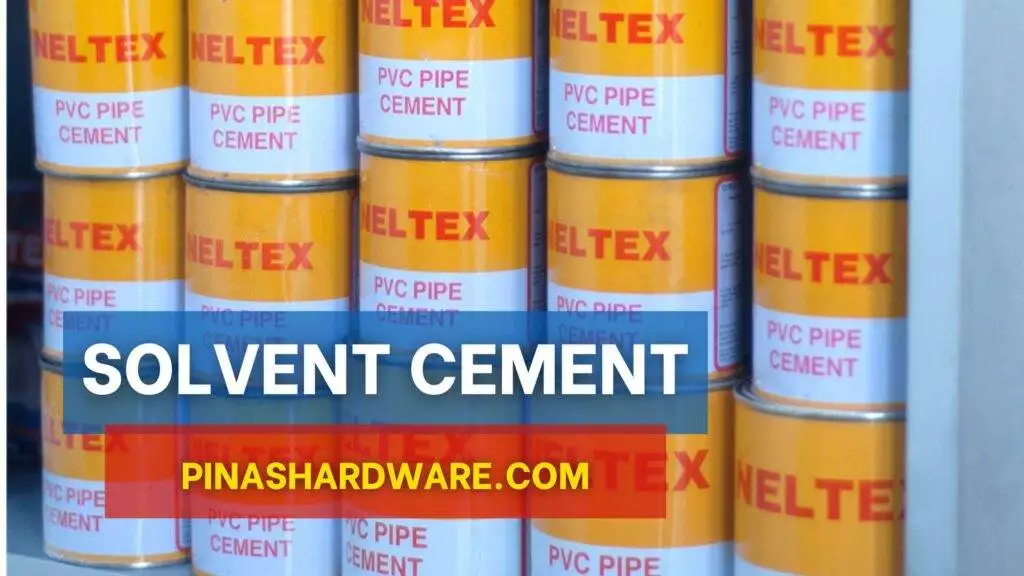Solvent Cement is a specialty glue that’s frequently utilized in pipefitting and plumbing-related tasks. Usually, it is made with dissolved PVC or CPVC resin and solvents like methyl ethyl ketone (MEK) or tetrahydrofuran (THF). Solvent cement is used to create a robust, watertight seal by chemically bonding the surfaces of PVC or CPVC pipes and fittings. To achieve a strong and long-lasting bond, solvent cement must be applied liberally, the surfaces must be cleaned and primed, and enough time must pass for curing.
Solvent Cement Prices
Solvent cement prices vary depending on its brand and unit. Its price ranges from ₱38.00 to ₱245.00.
| Details | Unit | Prices |
| Atlanta | 200cc | ₱179.00 |
| Atlanta | 100cc | ₱104.00 |
| Atlanta | 300cc | ₱245.00 |
| Neltex | 100cc | ₱45.00 |
| Neltex | 200cc | ₱85.00 |
| Sherman | 100cc | ₱38.00 |

Advantages of Solvent Cement
Strong Bonding – Solvent cement creates a chemical link between PVC or CPVC pipes and fittings, making a link that is resilient against pressure and leakage.
Watertight Seals – When solvent cement is properly placed, it forms a smooth, watertight barrier that stops water leaks and protects plumbing systems in business, manufacturing, and home settings.
Fast Cure Time – Solvent cement usually cures quickly, making pipe installation and assembly go more smoothly. This function reduces downtime and helps projects be completed more quickly.
Application Ease – Applying solvent cement just requires a few basic surface preparation steps, the cement to be applied, and enough time to cure. Both professionals and do-it-yourselfers can use it because of its simple application technique.
Disadvantages of Solvent Cement
Temperature Sensitivity – The handling and use of solvent cement is temperature-sensitive. High temperatures, especially in cold or hot surroundings, might have an impact on the curing process and possibly result in insufficient bonding or longer curing times.
Problems with Compatibility – Not every kind of piping material is compatible with solvent cement. Its applicability in systems utilizing metal or PEX is limited because it has been designed for use with PVC and CPVC pipes and fittings.
Storage and Shelf Life – Solvent cement can deteriorate as time passes, particularly if it comes into contact with heat or moisture. Its shelf life is short. To preserve the cement’s efficiency, it must be stored in cold, dry conditions.
Video about Solvent Cement
FAQs
What is the shelf life of solvent cement?
Solvent cement’s shelf life differs based on its manufacturer and preservation conditions. Solvent cement generally lasts one to two years when kept out of direct sunshine and heat sources in a cold, dry atmosphere. Any solvent cement that is no longer needed should be thrown away.
Is it safe to use solvent cement?
Volatile organic chemicals (VOCs) found in solvent cement release harmful fumes when applied and allowed to cure. To reduce exposure to fumes, it is imperative to apply solvent cement in well-ventilated locations and to use the proper personal safety equipment (PPE), such as gloves and a mask.
What is the curing time of solvent cement?
Although solvent cement usually sets in a matter of minutes, complete curing may need many hours. To guarantee a solid and waterproof seal, it is essential to give the cement enough time to dry completely before applying pressure to the pipe system.
Is it possible to use solvent cement on any kind of pipe material?
Particularly designed to be used with PVC (polyvinyl chloride) and CPVC (chlorinated polyvinyl chloride) pipes and fittings is solvent cement. It might not work well with things like metal cross-linked polyethylene, or PEX. To ensure compatibility, consistently refer to the manufacturer’s manual before using.
Do the surfaces need to be prepped before the application of solvent cement?
Yes, to achieve a strong bond using solvent cement, sufficient preparation of the surface is essential. After giving the surfaces an extensive scrub to get rid of all the dirt, grease, and debris, prime the surfaces to improve adhesion. For optimal results, strictly adhere to the manufacturer’s guidelines.

